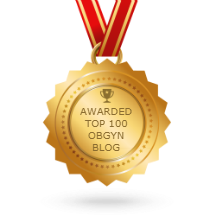Good Monday. We start out with good news, noting findings reported at the World Diabetic Congress that those who breastfeed have a substantially lower risk of developing type two diabetes later in life.
Northern hemisphere readers will note that the CDC ( Centers for Disease Control) has reported that this year's flu activity, so far, is relatively low. They also note that slow starts aren't unusual and those that haven’t yet gotten a flu shot should get one, especially since this year’s vaccine is good match.
USPTF (The United States Preventive Services Task Force) has once again released it’s version of guidelines for breast cancer screening. They are, predictably, lax, and recommend individualization for women of average risk before age of 50, and every other year between 50 and 74. They have chosen this age range of screening since they state their data show this is the age range “ of greatest benefit” from mammograms. This is no doubt true since this is when most cancers are diagnosed. However, what they cannot seem to understand is that women want ALL the benefit that mammograms can confer. Think about it. Their recommendations would condemn any woman below 50 of average risk to having her cancer detected only when it became palpable. Of course mammograms detect them far earlier, when they are more curable.
Women want ALL the benefits mammograms can confer, and yes, they understand all such diagnostic tests must be weighed against their risks. But in this case, the risks are so small. They are the risks of biopsies for concerning findings which come back negative for cancer. They are also, according to the USPTF, the risks of fear and discomfort of the procedure. I have seen two and a half decades of patients and I have never heard one patient cite these risks as even coming close to outweighing the benefit of screening for cancer. Where does the USPTF get the idea that these particular risks are so important or that women even care that much about them ?
The good news is that the controversy has hit the airwaves and the blogosphere. NBC, the Washington Post, the NY Times, and Newsweek, among others, all covered it. ACOG (The American College of Obstetricians and Gynecologists) maintains a recommendation of annual mammograms after 40, and the American Cancer Society recommends annual mammograms from 45 on. ACOG plans to convene a conference to sort out the issue once and for all.
Group B strep is an important pathogen for moms and newborns. A new vaccine against it is under development.
Big news: Ovarian cancer actually seems to arise in the tubes. The data for this is sufficiently compelling that ACOG is recommending removal of the tubes with preservation of the ovaries when applicable.
The CDC reports that the average age of first time mom’s is at an all time high, being 26 years and 4 months. This can be attributed, at least in part, to fewer teen pregnancies.
In sobering news, a new virus called Zika is causing birth defects in the Caribbean and South America. It is spread through mosquitos. The CDC may warn pregnant women not to travel in that region. I’m sure we’ll hear more about efforts to deal with this in the near future.
The effort to develop personalized vaccines to treat ovarian cancer is in the early stages. This work is on the desk of the FDA as we speak.
Wow, so much happening ! Stay tuned for more breaking news from the world of Obstetrics and Gynecology next week on medical Monday.








